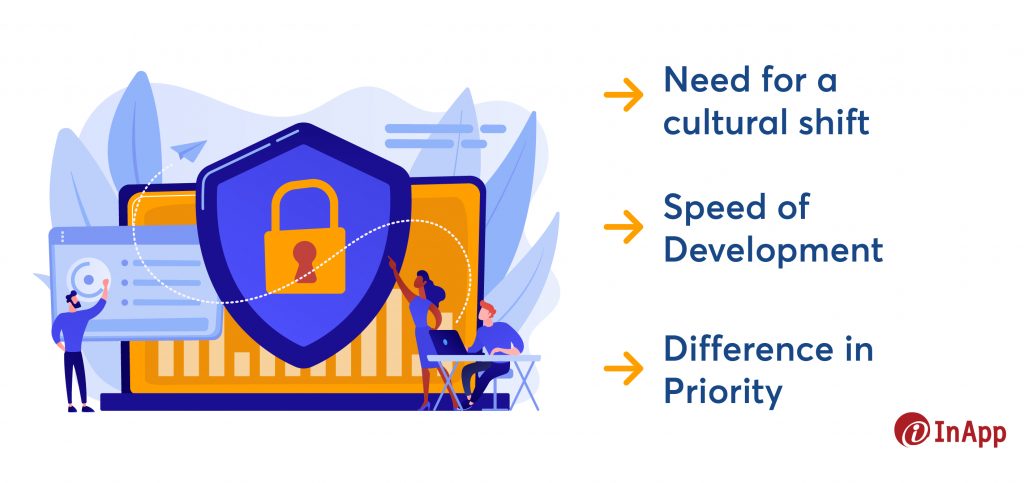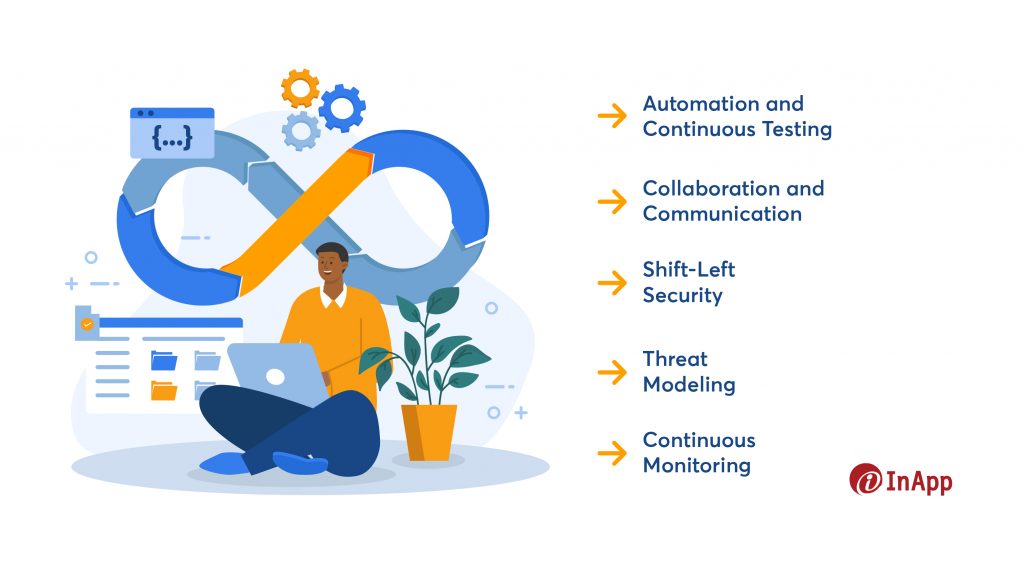Adopting DevOps practices is now the norm for rapid and efficient software deployment. However, amidst the rush to meet deployment deadlines, security concerns often take a backseat, leaving software vulnerable to potential cyber threats. In a recent study, it was estimated that people lost about 27.6 million in the past five years from cybercrime.
This is where the significance of embedding software security testing into the DevOps CI/CD pipeline comes in. By integrating security testing throughout the development lifecycle, the chances of security issues slipping into production can be drastically reduced.
In this blog post, we will explore the significance of incorporating comprehensive security testing in the CI/CD pipeline and how it fortifies the confidence of end-users and stakeholders.
Let’s dive into the world of DevOps and Software Security to ensure code and confidence go hand in hand!
DevOps in a Nutshell
DevOps, short for Development and Operations, is a set of practices designed to bridge the gap between software development and IT operations. Unlike traditional methods, DevOps promotes a more collaborative and integrated approach to the entire software development lifecycle.
One of the primary roles of DevOps is to streamline collaboration between development and operations teams. In the traditional method, the different teams involved in software development operated in silos leading to communication gaps, conflicts, and inefficiencies. With DevOps it fosters shared responsibility and accountability, encouraging developers and operations professionals to collaborate closely throughout the software development lifecycle.
By breaking down the barriers between developers and operations professionals, DevOps fosters a shared understanding of goals and requirements, leading to more effective problem-solving and faster issue resolution. Through automation, integration, and improved communication, DevOps empowers organizations to accelerate their software delivery, achieve higher efficiency, and respond to customer needs rapidly, thereby gaining a competitive edge in the fast-paced technology landscape. For more information on DevOps and its role in digital transformation, here is an article.
Challenges of Integrating Security into the DevOps Process
The modern software development process is dynamic and fast-paced often leading to integrating security into the DevOps process challenging.

Need for a cultural shift
One of the primary challenges is the cultural shift required to prioritize security as an integral part of the development workflow. Traditionally, security has remained an afterthought that is addressed separately from development. This often leads to scenarios where potential vulnerabilities are discovered only during deployment or after the software has been released.
Speed of Development
Speed of development in a DevOps environment is another challenge in integrating security. Continuous integration (CI) and continuous deployment (CD) demand rapid changes, which can leave little time for comprehensive security assessments. This fast-paced nature increases the risk of introducing vulnerabilities into the codebase, as security measures may be bypassed or not given enough attention.
Difference in Priority
Furthermore, security teams and developers often have different priorities, tools, and processes. Integrating these distinct functions seamlessly requires coordination and a shared understanding of security requirements, which can be challenging without proper communication and collaboration channels.
Considering these challenges and to ensure security is embedded in the entire software development lifecycle, the concept of DevSecOps emerged.
DevSecOps – The Key to Embedding Security in Software Development Lifecycle
DevSecOps, which stands for Development, Security, and Operations, aims to combine security practices with DevOps to create a more holistic and proactive approach to security. In DevSecOps, security is no longer an isolated step but is integrated into every stage of development and deployment.
By leveraging automated security tools and incorporating security testing into the CI/CD process, DevSecOps helps identify and address vulnerabilities early in the development cycle, reducing the risk of security flaws making their way into production.
With DevSecOps, there exists a culture of shared responsibility, where security becomes everyone’s concern rather than just the security team’s responsibility. Developers, operations personnel, and security professionals collaborate closely to understand and address security concerns throughout the development process.
Implementing Software Security Testing with DevOps Services
Implementing software security testing with DevOps services is crucial to building secure and reliable software applications. DevOps, with its emphasis on continuous integration and continuous delivery (CI/CD), ensures security is not an afterthought but a core component of the process. Here’s how organizations can implement software security testing with DevOps services:

1. Automation and Continuous Testing: DevOps promotes automation, and this extends to security testing. Organizations can use various automated security testing tools that perform static code analysis, dynamic scanning, and vulnerability assessments. By integrating these tools into the CI/CD pipeline, security tests can be run automatically with every code commit, ensuring that security checks are an integral part of the development process.
2. Collaboration and Communication: DevOps fosters collaboration between development, operations, and security teams. Regular communication and joint efforts are essential for implementing security testing effectively. Security experts can work closely with developers to understand the application architecture and potential risks, while developers can learn best practices for writing secure code.
3. Shift-Left Security: In a DevOps approach, security testing is addressed early in the development cycle. This prevents security issues from piling up and becoming more challenging to fix later.
4. Threat Modeling: DevOps teams can conduct threat modeling exercises to identify potential attack vectors and design security measures accordingly. This proactive approach helps prioritize security efforts and allocate resources efficiently.
5. Continuous Monitoring: Implement continuous monitoring of applications and systems in production. DevOps services can integrate security monitoring tools to detect and respond to security incidents promptly.
Organizations can effectively reduce the risk of security breaches and data compromises by incorporating software security testing into the DevOps pipeline. Early detection and remediation of security vulnerabilities prevent costly post-release fixes and potential damage to the organization’s reputation.
To Sum Up
In today’s highly competitive digital landscape, creating reliable and secure software products is paramount for organizations’ success. However, with the ever-increasing cybersecurity threats, creating secure software is equally essential. By incorporating security testing throughout the development lifecycle, organizations can proactively identify and address vulnerabilities, reducing the risk of data breaches and potential financial losses.
A cohesive DevSecOps approach that combines development, operations, and security practices into a unified pipeline, will ensure that security is not an afterthought but an integral part of the software development process. This shift-left approach to security minimizes potential security flaws and reduces the cost and effort of fixing vulnerabilities at later stages. The significance of DevOps services and software security testing cannot be overstated in creating reliable and secure software products. It is high time for organizations to adopt a cohesive DevSecOps approach to combine development, operations, and security practices effectively. If you require any assistance or have further inquiries, please do not hesitate to contact us.
